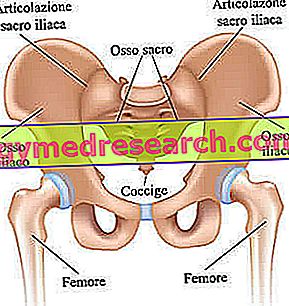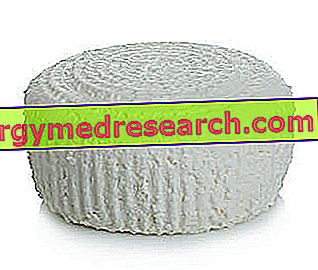Vertebral stenosis is a narrowing of one or more areas of the vertebral canal, formed by the overlapping of the thirty-three vertebrae that make up our spine. Since inside this channel delicate nervous structures are contained, which give rise to the bone marrow, it is generally a rather annoying pathology. In addition to the marrow, the stenosis can also compress the spinal nerves, which emerge from it at the vertebral foramina.
Stenosis, which electively affects the cervical and / or lumbar spine, can occur through symptoms such as cramps, pain, numbness of the lower limbs, back, neck, shoulders or arms; Spinal cord suffering signs include bladder or bowel dysfunction.
Causes and risk factors
Fortunately, vertebral stenosis is a not very common disease, which recognizes causes of congenital origin (when it is present since birth), acquired or mixed. Congenital or constitutional forms, such as achondrodysplasia, are extremely rare, as are evolutionary ones, which arise during development in subjects suffering from various forms of dwarfism.
In its secondary form, vertebral stenosis appears more frequently after middle age and electively affects the male sex. The acquired forms are in fact by far the most common and recognize their main causal factor in degenerative joint disease. This term, synonymous with osteoarthritis, designates a pathological picture caused by the progressive wear of the articular cartilage; in response to this cartilage degeneration, a series of modifications of the underlying bone tissue arise, which increases in size and assumes an irregular appearance. Specifically, these alterations can also affect one or more vertebrae, which increase in size and take an irregular shape, thus going to restrict the spinal canal.
Also the degenerative disc disease (disc herniation), spondylolysis and spondylolisthesis, ligamentous hypertrophy, sequelae of spinal trauma (such as vertebral fractures) or column infections and surgery - as well as cancer and systemic diseases of 'bone (Piaget's disease and gout) - can reduce the caliber of the vertebral canal.
Among athletes, stenosis of the vertebral species mainly affects former wrestlers and former weight lifters, who for years have sustained heavy loads on the back and in particular in the lumbar area.
Among the risk factors, in addition to the advanced age and the execution of demanding jobs, burdensome for the column, we recall the fluorosis (a disease given by the accumulation of fluorine in the body, due to an excessive introduction of the mineral with Foods).
Symptoms
Not always the narrowing of the vertebral canal causes significant problems, which appear instead when it compresses the spinal cord or the nerve roots, determining a series of symptoms distributed in the regions innervated by them. The mechanical compression effects can also affect the blood vessels and cause a decrease in local blood flow, contributing to the onset of symptoms.
Lumbar spinal stenosis occurs clinically with a pseudo-claudication ( claudicatio intermittens spinalis ). The painful symptoms are in fact produced by standing or walking, while they improve within a few minutes when a sitting or lying position is taken (only to reappear after another physical effort).
In other cases the symptomatology is more nuanced and may include asthenia (muscle weakness), numbness or paresthesia (tingling) of the lower limbs, always aggravated by walking. Often, and especially when it is caused by a herniated disc, the vertebral stenosis causes moderate low back pain (pain located in the lower back), more or less accompanied by sciatica (pain that radiates in the back of the thigh and leg) or cruralgia (pain radiating to the front of the thigh).
The posture of flexion of life (for example, leaning forward on the shopping cart) is often useful to alleviate painful symptoms, while the passage from this position to the extension of the column tends to exacerbate it. This explains why patients affected by stenosis of the vertebral canal prefer to proceed with a posture tilted forward and feel more discomfort in uphill stretches and more relief in those in descent (as opposed to those affected by intermittent claudication of vascular origin).
When the stenosis affects the cervical tract, the patient may experience irradiated pain in the neck, shoulder and upper limbs, more or less associated with an annoying sense of vertigo and loss of balance.
In more serious cases, severe disorders may arise, such as impotence, alteration of sexual functions, bladder dysfunction and defecation control (paralytic syndrome involving the cauda equina).
DIAGNOSIS : a good evaluation of the vertebral canal amplitude can be obtained with traditional radiological examination, but also and above all with CT and magnetic resonance.
Care
The treatment of pain due to spinal stenosis begins with NSAIDs, over-the-counter drugs widely used for their anti-inflammatory and analgesic properties. Since their use can cause important side effects, such as gastric ulcer, NSAIDs should still be used under medical supervision. If the pain is severe and does not regress, they are replaced with more powerful analgesics, such as paracetamol.
Only in exceptional cases, such as in the presence of neurological tests positive for myelopathy (suffering from bone marrow, acute loss of bladder or intestinal continence), surgery is indicated to remove the cause that gave rise to the stenosis. In all other cases we proceed with conservative treatment, which can make use, according to medical indications, of one or more physiotherapy and non-physiotherapy treatments (ultrasounds, electrostimulation, massages, manipulations, acupuncture etc.).

In the presence of a narrowing of the lumbar vertebral canal exercises can be useful aimed at strengthening the abdominal muscles, combined with others of stretching; instead, exercises that give rise to hyperextension of the column should be avoided.
The acquisition of a correct technique for lifting loads (straight back and bent knees, not the other way) is also very important. These behavioral rules are very useful also in the preventive field. The most suitable exercises in the presence of a vertebral stenosis will still be established after a careful postural examination, in collaboration with the doctor and other specialists.



